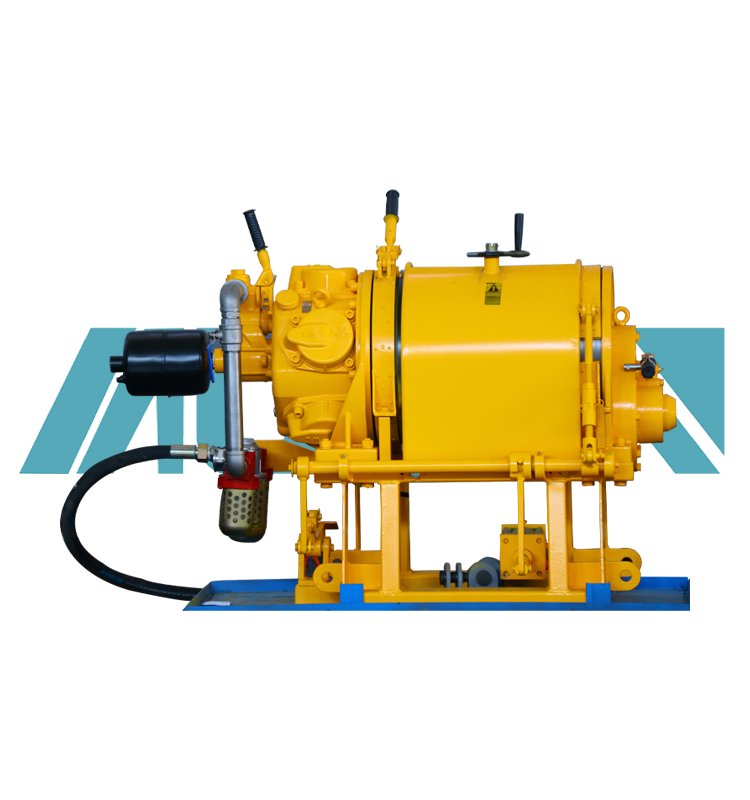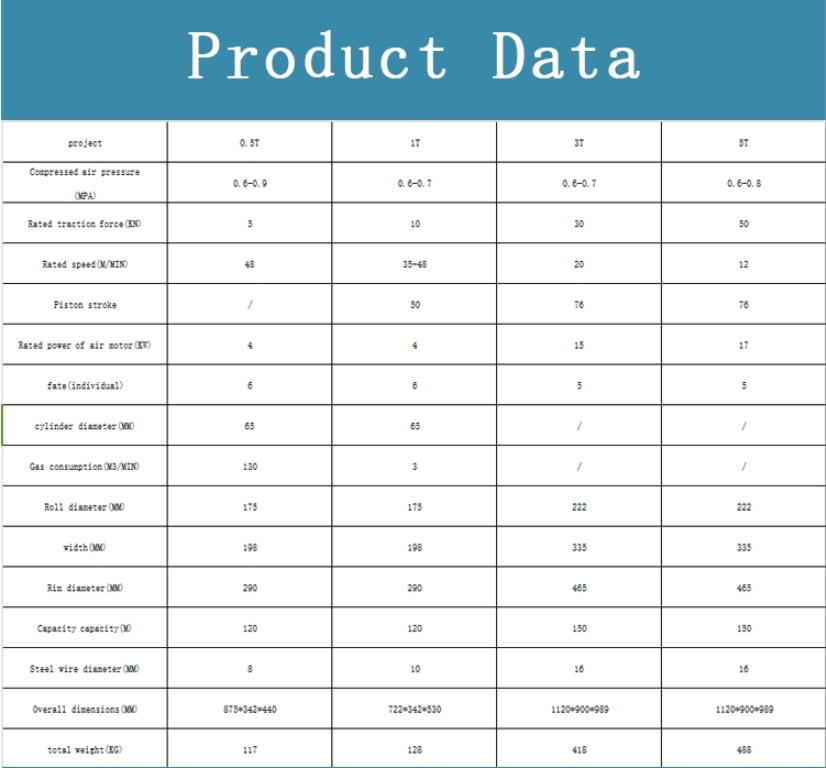 中文版
中文版



Welcome to contact us by phone:0086-0312-7969888
A pneumatic winch operates using compressed air as a power source to generate mechanical work. Here's a general overview of how a pneumatic winch works:
Power Source:
The primary power source for a pneumatic winch is compressed air. Compressed air is generated using a pneumatic system, typically through an air compressor.
Air Compressor:
An air compressor pressurizes ambient air, increasing its density and creating a high-pressure air supply. The compressed air is stored in a tank or delivered directly to the pneumatic winch.
Control Valve:
A control valve regulates the flow of compressed air to the pneumatic winch. The operator can control the winch's speed and direction by manipulating the control valve.
Air Motor:
The compressed air is directed to an air motor within the winch. The air motor converts the energy stored in the compressed air into mechanical energy to drive the winching mechanism.
Winching Mechanism:
The mechanical energy generated by the air motor is used to drive the winching mechanism. The winching mechanism typically includes a drum or spool around which a cable or rope is wound.
Cable or Rope:
The cable or rope is attached to the load that needs to be lifted, pulled, or moved. As the winching mechanism turns, it winds the cable or rope around the drum, exerting force on the load.
Directional Control:
The directional control of the pneumatic winch is determined by the operator through the control valve. By adjusting the valve, the operator can control the direction of rotation of the air motor and, consequently, the direction of the winching operation.
Braking System:
Pneumatic winches often include a braking system to control and stop the rotation of the winching mechanism when needed. This ensures that the load can be held securely in place or lowered in a controlled manner.
Safety Features:
Pneumatic winches may incorporate safety features such as pressure relief valves to prevent over-pressurization, ensuring the system operates within safe limits.
Maintenance:
Pneumatic winches are generally known for their simplicity and ease of maintenance. Regular checks of the air motor, control valve, and other components ensure the proper functioning of the winch.
Pneumatic winches are commonly used in environments where electricity may not be suitable due to safety concerns, such as in explosive or flammable atmospheres. They are valued for their simplicity, durability, and the ability to provide reliable performance in challenging conditions.

X